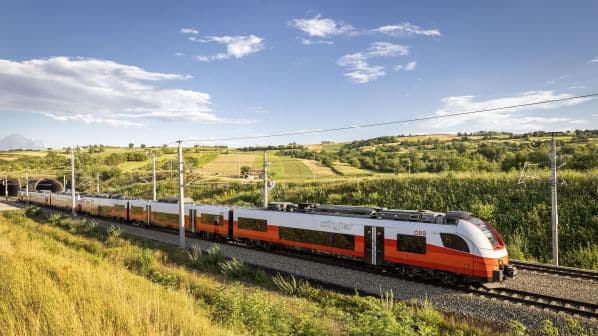A vision for the future of the Austrian rail network was unveiled on January 25 with the publication of a technical draft of the country’s Rail Network 2040 plan. The strategy focuses on modal shift towards rail for both passengers and freight and proposes 67 rail development projects with a total cost of €26bn.
Austria’s climate protection minister, Ms Leonore Gewessler, and Austrian Federal Railways (ÖBB) CEO, Mr Andreas Matthä, jointly launched the document in Vienna. It is an outline vision of how the Austrian rail network should develop over the next 20 years.
The document stresses that it contains a strategic direction-of-travel overview, rather than fully-funded and developed proposals for individual projects.
The draft plan has the objective of increasing rail’s modal share to 40% by 2040. This is a significant increase from the current level of the 25% of the passenger market held by public transport (including buses) and 31% for freight. Annual train-km over the Austrian network are expected to increase 55% by 2040 to 255 million, up from 165 million in 2022.
The draft plan identifies 67 separate projects, with a total cost of €26bn at today’s prices, including a new double-track railway in Upper Austria and Bavaria that will reduce journey times between Vienna and Munich to 2h 30min from 4 hours at present.
Five key target areas are identified in the draft plan, which will underpin the development of the Austrian rail network over the next 20 years. They are:
- international connections
- regional connections
- connections in major urban areas
- regular-interval timetables
- rail freight
The draft plan will now be reviewed by Austria’s federal states before undergoing public consultation. A final version of the plan is then expected by the end of this year.
“This draft plan is full of bold ideas, new rail connections and greatly-improved rail routes,” Gewessler says. “It clearly sets out the direction in which we need to travel for the next 15 to 20 years to achieve a more sustainable rail network.”


